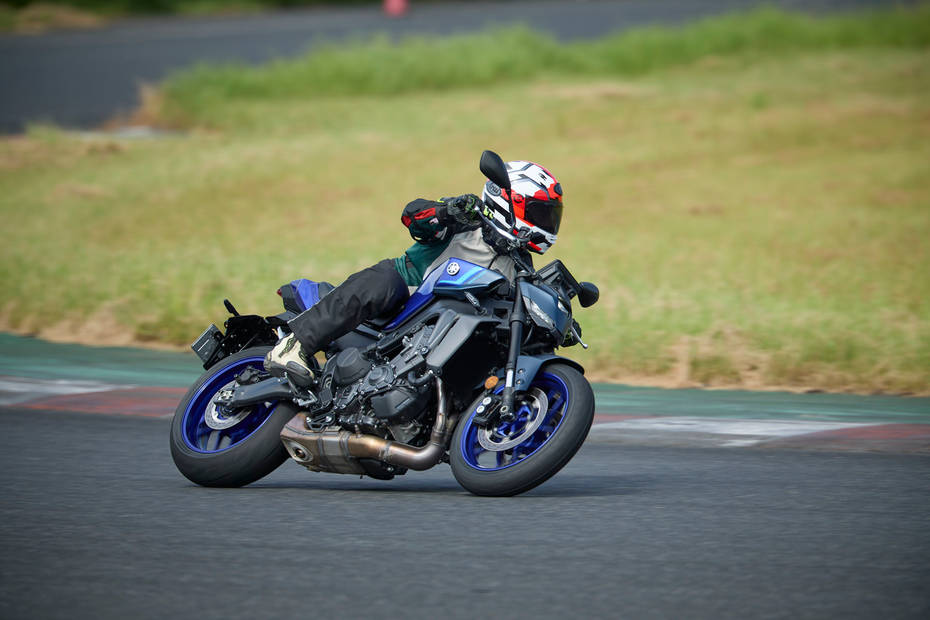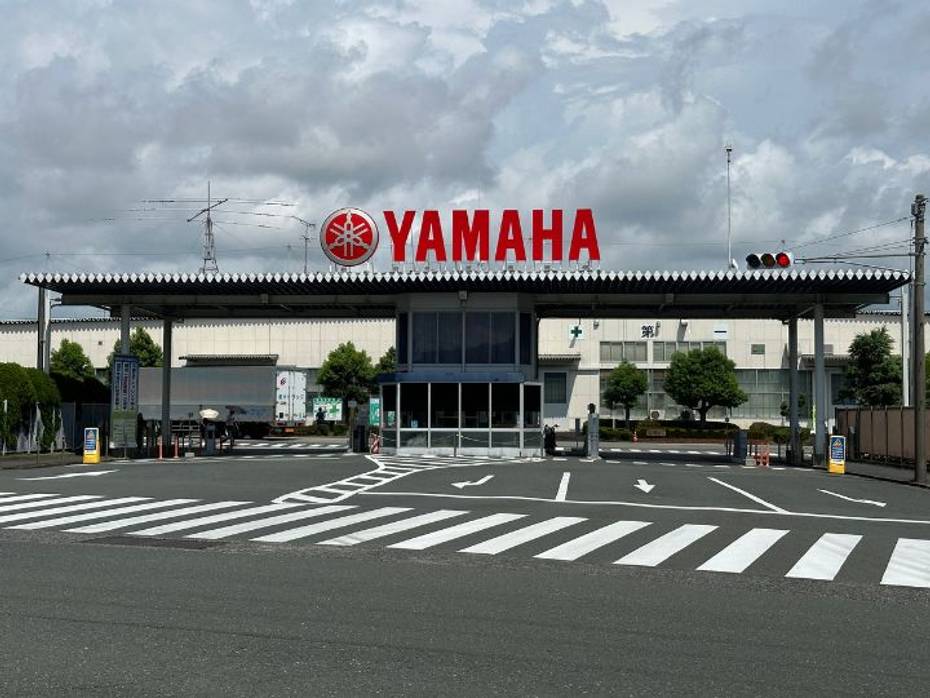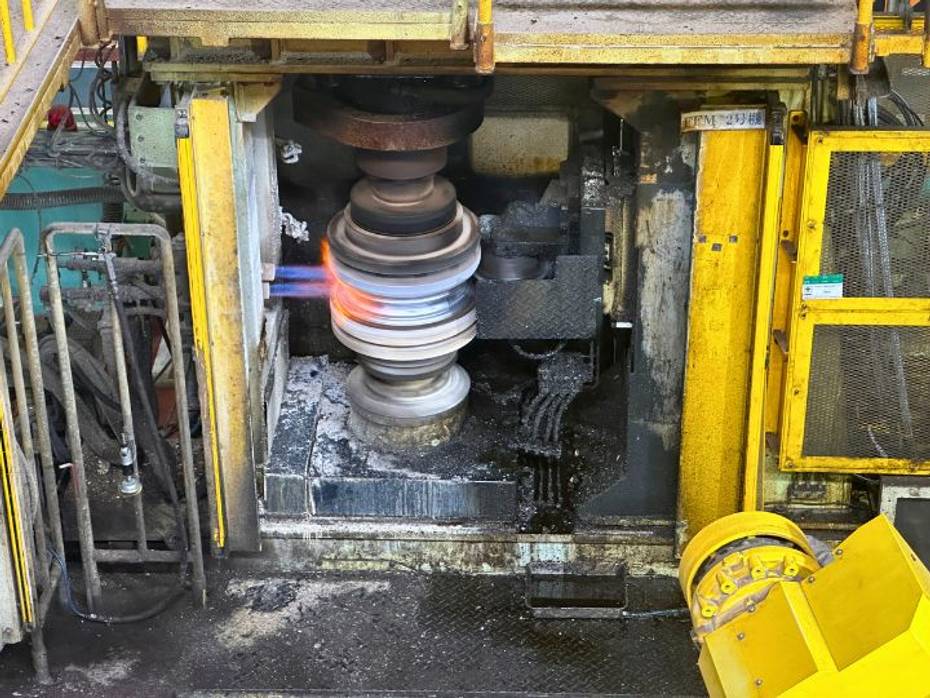
Yamaha MT-09 Showcased At Bharat Mobility Expo 2025
- Jan 17, 2025
- Views : 363


Iwata in Japan is the hometown of Yamaha - the Japanese company that’s renowned not just for some of the world’s best motorcycles and scooters, but also for top-notch musical instruments. Now while I do have a passing interest in musical instruments, the main reason for us to visit Yamaha in Iwata was to see just how their motorcycles, and some of their components, are manufactured. Factories, even ones that make motorcycles, tend to be a bit boring for motorcycle enthusiasts. But our behind the scenes look at Yamaha’s operations was anything but.
What makes most motorcycle factories boring, or rather conventional, is their use of traditional conveyor belts to move partially assembled motorcycles along to different stations. As these half-made bikes move to each station, technicians do a single job such as mounting the engine, the swingarm, threading the electrical harness through the frame, etc before the bike moves to the next station for the next job.

Yamaha’s approach to the assembly line is rather unique, making heavy use of AGVs (Automated Guided Vehicles). Now AGVs are nothing new to automobile manufacturing. You’ll find many automobile factories use these robotic vehicles to move trays of various components to multiple stations along the assembly line. But instead of using a traditional conveyor belt to move partially assembled motorcycles from one station to the next, Yamaha’s factory moves them on these AGVs.
Each AGV knows which bike it is moving and how far along it is in its assembly process. And when the AGV gets to any station, all the tools located at that station are automatically set to the right torque settings for that part of the assembly process. The operator at that station doesn’t even have to bother changing these settings for different bikes manually, and during a single shift, is able to complete the task at their station for different motorcycles. While this might sound a bit unimpressive in words, it’s really remarkable to see these half-built bikes on AGVs moving around by themselves from station to station, until they’re completely built. A truly fascinating sight.
Of course, our main reason for visiting Yamaha in August of this year was to test ride the latest 2024 MT-09, which is truly a brilliant machine to ride. So post our visit to the assembly line, we were promptly shown Yamaha’s casting and forging plant. What makes this so special is that Yamaha is one of very few motorcycle manufacturers that makes the chassis and wheels for some of their bikes in-house, rather than outsourcing these jobs to another factory. This was to give us an insight into why the MT-09’s handling is as good as it is.
Walking into the casting plant, we were greeted by a wave of heat coming from massive furnaces working tirelessly to melt blocks of aluminium to be poured into moulds to make wheels and frames for Yamaha’s sports bikes like the aforementioned MT-09 and even the legendary YZF-R1. But the most fascinating bit we saw in this plant was Yamaha’s spin forging process for making wheels for the MT-09.

the automobile community
Spin forging essentially involves casting an aluminium wheel and then using high-speed rotation while applying external pressure. This combination of centrifugal force and pressure results in a high-strength wheel with a thinner and lighter structure compared to traditional forging methods. The technique allows Yamaha to craft wheels with minimised weight, essential for a nimble and responsive ride on a motorcycle like the MT-09.
But what makes spin forging so ideal? Traditional cast wheels can sometimes lack the strength needed in crucial areas due to uneven material density. Yamaha’s spin forging, however, aligns the metal structure in a way that boosts tensile strength without compromising the wheel’s lightweight characteristics. The result is a perfectly balanced wheel that’s strong enough to handle the stresses of aggressive riding, while being light enough to shave off unnecessary rotational weight.

For the MT-09, this weight savings translates into better handling. Reducing rotational mass lowers the gyroscopic effect that can make motorcycles feel sluggish during direction changes. With spin-forged wheels, the MT-09 feels lighter, quicker to respond, and easier to manoeuvre at both high and low speeds. This responsiveness was immediately noticeable during our track ride, where the MT-09 flowed from one corner to the next with minimal effort, giving great feel and boosting my confidence to push harder.
While this saying might be true for the “wurst” things, getting a chance to see how Yamaha’s bikes and their components certainly gave me a fantastic insight into what makes the company’s motorcycles so brilliant to ride. It’s their meticulous attention to detail, their innovative way of doing things, and not to mention, their immense legacy that fuels each of these bikes that leave the factory in Iwata to garner loyal fans across the world

Yamaha MT-09 Showcased At Bharat Mobility Expo 2025

Flashback Friday: Yamaha MT-01 – The Master Of Torque

Breaking: Yamaha R7, MT-07 and MT-09 Coming Soon

EXCLUSIVE: Yamaha Big Bikes To Soon Land In India

Yamaha R7 And MT-09 Headed To India Soon

This Wild MT-09 Kit May Soon Hit The Streets

Soon-to-be-unveiled Yamaha YZF-R9 Trademarked In India

This Pitbull Of A Motorcycle Was Once A Yamaha XSR900

Yamaha’s Turbo Dreams Traced

2020 Street Triple R Review In Images
 Triumph Street Triple 765
Triumph Street Triple 765
 Ducati Monster
Ducati Monster
 BMW F 900 XR
BMW F 900 XR
 Triumph Tiger 850 Sport
Triumph Tiger 850 Sport
 BMW F 900 GS
BMW F 900 GS
India's largest automotive community
 Yamaha MT 15
Rs. 1.69 Lakh
Yamaha MT 15
Rs. 1.69 Lakh
 Yamaha R15 V4
Rs. 1.83 Lakh
Yamaha R15 V4
Rs. 1.83 Lakh
 Yamaha yzf r15 v3
Rs. 1.66 Lakh
Yamaha yzf r15 v3
Rs. 1.66 Lakh
 yamaha fz s fi version 3
Rs. 1.22 Lakh
yamaha fz s fi version 3
Rs. 1.22 Lakh
 Yamaha fzs fi v4
Rs. 1.30 Lakh
Yamaha fzs fi v4
Rs. 1.30 Lakh
 Yamaha Ray ZR 125
Rs. 92,880
Yamaha Ray ZR 125
Rs. 92,880
 Yamaha Aerox 155
Rs. 1.49 Lakh
Yamaha Aerox 155
Rs. 1.49 Lakh
 Yamaha Fascino 125
Rs. 92,680
Yamaha Fascino 125
Rs. 92,680